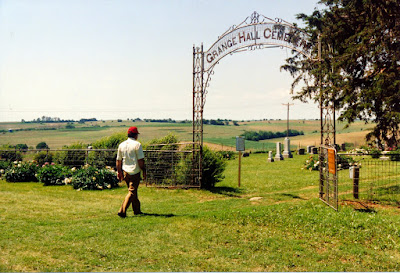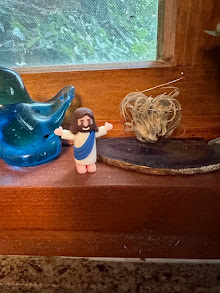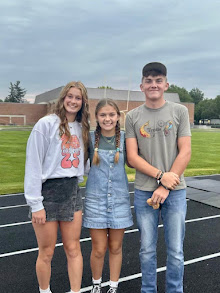Anyone ever tear out the postage paid cards offering free vacation guides and roadmaps for prospective Great American Roadtrippers in the Better Homes and Gardens magazines in the checkout aisle? I was that kid, a sucker for free stuff, for maps, for sights to see and roads not taken. I diligently sent off for every free offer from any state from any magazine my mom subscribed to; magazines at the doctor's or dentist's or car dealer's were also fair game. Never mind that our family trips were predestined: no need for Delaware, Florida, or Maine. The maps themselves had power.
When the Missouri road map arrived, we unfolded to the listing of cities and counties to check the status of a place we had never been, never seen: a site as mythical as Brigadoon in our family lore. The state of Missouri listed every village, every borough, and, I assume, every wide spot off a lettered highway, including our very favorite town, a little place called Bado down in Texas county.
What made Bado special? With a population of just four people, it was the smallest town in the state of Missouri. We were entranced; not only with the notion of a place the size of our family being a town, but the fact that Missouri's highway map would recognize not just cities like St. Louis....but also a town like Bado, so unimaginably small that we figured its buildings must all be empty! The map told us Bado was a place, but it was also an idea, a coming together of the lines of perspective, a myth, a mist, that would disappear if we didn't check on it every year....or if we drove down to Texas county to find it.

Out here on the prairie, the wind, the rain, and time itself join forces to change landscapes until nothing is left but a name. A forgotten rural schoolhouse once stood south and east of Westboro along the gravel road I drive to work. For a while the rubble of bricks turned up at planting time, but the foundation is one with the soil any more.
There are a number of signs along the two miles of route O near the site of the old schoolhouse, put up several years back by a proprietor of Fourteen Pines farm. Alas, a casual traveler can no longer pick out the home place; age and disease have left nothing of the statuesque pines. I have enjoyed the place names on the signs in the fence rows, but they are deteriorating as well and will soon be as much a mystery as the name 'Rosebud' on a sled.
Farmsteads grow up and flourish, are absorbed or vanish; town centers migrate with the traffic patterns and schools consolidate, but while populations wax and wane, our cemeteries remain.
We honor those that came before: those who settled this country, built this country, fought for this country and ultimately came back to this ground to their earthly rest. Our cemeteries are beautiful places this time of year with the Stars and Stripes whipping in the wind and the peonies and irises in bloom. Our past is there...in all the names that seem familiar and the remembrances laid lovingly and dutifully alongside. But our future is there as well; for every tended cemetery is a mark of civilization and faith that our community will still be on the map in years to come.
Bado
A village in Morris Township. It was established during the Civil War (c. 1863) by Mr. Clabe Groce. The present (1933) postmaster has always lived within a mile of the office and has heard that it was so called because it was settled during the bad years. The name was used long before it became a post-office in 1888. (--Place Names.)
Bado was located at Section 34, Township 30 N, Range 11 W, on Highway M, south of Fairview, and north of YY.























No comments:
Post a Comment